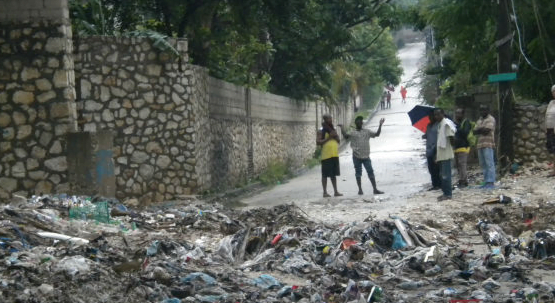The world’s attention is understandably focused on the disaster wrought by Sandy in New York and New Jersey. Millions of good hearted Americans and people around the world are tapping into their wallets to donate to organizations helping people in New York and New Jersey recover from Sandy.
The impulse to help those affected in New York and New Jersey is laudable, but if people want to help those worst affected by Sandy, they should start paying attention to the situation in Haiti. New York and New Jersey are the wealthiest parts of the wealthiest country on the planet and the USA has capable and well crafted disaster emergency response systems.
The Northeast will eventually recover. The same cannot be said for Haiti.
Haiti was spared a direct hit by Sandy, but the damage, death, and displacement caused by the storm is much, much worse than anywhere else on the planet right now. How bad is it? 200,000 people are left homeless; 54 people were killed; entire villages washed away. Worse, cholera spreads by water. Disruptions caused by the storm affects sanitation systems and impedes access to clean drinking water. A surge in cholera cases in Port au Prince has already been reported by aid agencies.
That’s terrifying. But potentially more calamitous in the near and long term is the damage done to agriculture. This is the economic lifeline of many thousands of people and was literally uprooted by the storm. People are starting to use the word “famine” to describe what may befall Haiti in the coming days. That, of course, could lead to serious political instability.
A rise in food prices in Haiti triggered violent demonstrations and political instability in April 2008. Jean Debalio Jean-Jacques, the Ministry of Agriculture’s director for the southern department, said he worried that the massive crop loss “could aggravate the situation.”
“The storm took everything away,” said Jean-Jacques. “Everything the peasants had in reserve – corn, tubers – all of it was devastated. Some people had already prepared their fields for winter crops and those were devastated.”
In Abricots on Haiti’s southwestern tip, the community was still recovering from the effects of 2010’s Hurricane Tomas and a recent dry spell when Sandy hit.
“We’ll have famine in the coming days,” said Abricots Mayor Kechner Toussaint. “It’s an agricultural disaster.”
Humanitarian supplies in Haiti right now are very low. They were depleted by Tropical Storm Isaac in August and never replenished. This could get very ugly, very quickly.
Things are certainly bad in the Northeast of the USA. But the situation is orders of magnitudes worse in Haiti right now. Spare a thought (or a few dollars) for them.
